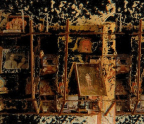Turning the Page on the Politics of Inclusion and Exclusion, 30 Years On

When Lee-Ann Martin and I met to discuss how we would address this issue’s “Déjà Vu” thematic, we were on my balcony in Ottawa’s Centretown for a long overdue visit. I can’t remember exactly how I met Lee-Ann,1 but I do know when I was first influenced by her critical writing on Indigenous art and curatorial practice. I was in my third or fourth year of undergrad at Western University in London, Ont., at least 20 years ago; since then, her work has been a sort of compass, informing my academic and curatorial journey. Lee-Ann is one of the few curators who did not have an artistic practice in the 1980s and 1990s, which is when she first started working and when she was one of only a few Indigenous women curators. She was committed to professionalizing Indigenous curatorial practice and invested in curation as a tool to promote Indigenous art and self-determination in an art milieu that was not interested in the complexity and sophistication of contemporary Indigenous art, nor in the role it played in art history in Canada.
Lee-Ann was, as we’ll discuss, at the vanguard of shifts in gallery and museum policies advocating for the inclusion of contemporary Indigenous art. Her experiences with the development of two instrumental documents—“Turning the Page: Task Force Report on Museums and First Peoples,” published in 1992, and “The Politics of Inclusion and Exclusion: Contemporary Native Art and Public Art Museums in Canada,” a report published by the Canada Council for the Arts in 1991—continued to inform her curatorial practice over the years.
“Turning the Page” was a response by both Indigenous communities and the museums community to the overwhelming reaction against the Glenbow Museum’s 1988 exhibition . It became one of the first publicly debated intersections of land claim dispute, museum sponsorship and Indigenous self-determination. With , the Glenbow became a venue for, to be used to justify the ongoing and illegal occupation of Indigenous territories. The resistance of Indigenous communities, alongside allies, against galvanized critical debate about the ethics of museum practices and federal responsibility to Indigenous rights through a letter-writing campaign by the Lubicon to regional, national and international museums who had lent artworks to the exhibition.
You’re reading a preview, subscribe to read more.
Start your free 30 days





